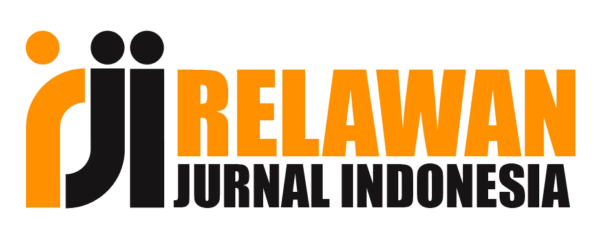Development of optical devices learning media using webtoon for high school class XI students
Abstract
Keywords
Full Text:
PDFReferences
Achmad, G. P., & Purwanto, P. (2022). Pengembangan Komik Berbasis Pendekatan Saintifik sebagai Media Pembelajaran Fisika SMA pada Topik Kalor. Wahana Pendidikan Fisika, 7(1), 19-26. https://doi.org/10.17509/wapfi.v7i1.42890
Anesia, R., Anggoro, B. S., & Gunawan, I. (2018). Pengembangan media komik berbasis android pada pokok bahasan gerak lurus. Indonesian Journal of Science and Mathematics Education, 1(2), 149-153. https://doi.org/10.24042/ijsme.v1i2.2774
Astuti, T., & Handhika, J. (2021). Pengembangan Media Alat Optik Berbasis IOT untuk Meningkatkan Hasil Belajar Siswa SMK di Kota Madiun. Jurnal Edukasi Matematika dan Sains, 9(2), 433-439. http://doi.org/10.25273/jems.v9i2.10995
Febrianti, Y., Sinaga, P., & Feranie, S. (2022). Pengembangan Bahan Ajar Komik Fisika Berbasis Pendekatan Kontekstual pada Materi Hukum Newton. Wahana Pendidikan Fisika, 7(1), 10-18. https://doi.org/10.17509/wapfi.v7i1.43954
Gunawan, I. (2014). Pengembangan aplikasi mobile learning fisika sebagai media pembelajaran pendukung. Jurnal Ilmiah Pendidikan Fisika Al-Biruni, 3(1), 20-26. https://doi.org/10.24042/jipfalbiruni.v3i1.62
Hadi, W. S., & Dwijananti, P. (2015). Pengembangan komik fisika berbasis android sebagai suplemen pokok bahasan radioaktivitas untuk sekolah menengah atas. Unnes Physics Education Journal, 4(2). 15-24. https://doi.org/10.15294/upej.v4i2.7431
Munawaroh, R., & Setyarsih, W. Identifikasi Miskonsepsi Siswa dan Penyebabnya pada Materi Alat Optik Menggunakan Three-tier Multiple Choice Diagnostic Test. Jurnal Inovasi Pendidikan Fisika, 5(2), 79-81. https://doi.org/10.26740/ipf.v5n2.p%25p
Oktafiani, P., Subali, B., & Edie, S. S. (2017). Pengembangan alat peraga kit optik serbaguna (AP-KOS) untuk meningkatkan keterampilan proses sains. Jurnal Inovasi Pendidikan IPA, 3(2), 189-200. http://dx.doi.org/10.21831/jipi.v3i2.14496
Pebruanti, L., & Munadi, S. (2015). Peningkatan motivasi dan hasil belajar pada mata pelajaran pemograman dasar menggunakan modul di SMKN 2 Sumbawa. Jurnal Pendidikan Vokasi, 5(3), 365-376. http://dx.doi.org/10.21831/jpv.v5i3.6490
Purwaningtias, W. S., & Putra, N. M. D. (2020). Analisis Tingkat Pemahaman Konsep dan Miskonsepsi Fisika pada Pokok Bahasan Alat-alat Optik di SMA Negeri 1 Purwodadi. Unnes Physics Education Journal, 9(2), 139-148. https://doi.org/10.15294/upej.v9i2.41920
Rahayu, M. S. I., & Kuswanto, H. (2021). The effectiveness of the use of the Android-based Carom games comic integrated to discovery learning in improving critical thinking and mathematical representation abilities. Journal of Technology and Science Education, 11(2), 270-283. http://dx.doi.org/10.3926/jotse.1151
Sujanem, R. (2012). Pengembangan modul fisika kontekstual interaktif berbasis web untuk meningkatkan pemahaman konsep dan hasil belajar fisika siswa SMA di Singaraja. Jurnal Nasional Pendidikan Teknik Informatika: Janapati, 1(2), 103-117. https://doi.org/10.23887/janapati.v1i2.9825
Ulfah, M., & Okyranida, I. Y. (2021). Pengembangan Komik Digital Berbasis PBL (Problem Based Learning) Sebagai Media Pembelajaran Pada Materi Energi. In Seminar Nasional Sains 2 (1), 73-81.
Widyawati, A., & Prodjosantoso, A. K. (2015). Pengembangan media komik IPA untuk meningkatkan motivasi belajar dan karakter peserta didik SMP. Jurnal Inovasi Pendidikan IPA, 1(1), 24-35. http://dx.doi.org/10.21831/jipi.v1i1.4529
Yuberti, Y. (2015). Online group discussion pada mata kuliah teknologi pembelajaran fisika. Jurnal Ilmiah Pendidikan Fisika Al-Biruni, 4(2), 145-153. https://doi.org/10.24042/jipfalbiruni.v4i2.88
DOI: https://doi.org/10.17509/wapfi.v8i1.45384
Refbacks
- There are currently no refbacks.
Copyright (c) 2023 Diah Retno Destriana

This work is licensed under a Creative Commons Attribution-ShareAlike 4.0 International License.
The Journal Wahana Pendidikan Fisika http://ejournal.upi.edu/index.php/WapFi/ is licensed under a Creative Commons Attribution-ShareAlike 4.0 International License
The Journal WaPFi (Wahana Pendidikan Fisika).
All rights reserverd. pISSN 2338-1027 eISSN 2685-4414
Copyright © Faculty of Mathematics and Science Education (FPMIPA) Universitas Pendidikan Indonesia (UPI)









